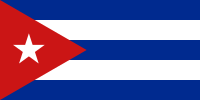
Photo from wikipedia
Introduction: In 2011, Medicare began offering annual preventive care visits (annual wellness visit; AWV) to beneficiaries at no charge. Providing free preventive care supports primary and secondary prevention of chronic… Click to show full abstract
Introduction: In 2011, Medicare began offering annual preventive care visits (annual wellness visit; AWV) to beneficiaries at no charge. Providing free preventive care supports primary and secondary prevention of chronic disease and may reduce ethnoracial disparities in health outcomes. Objectives: To estimate AWV utilization trends by ethnoracial group in a nationally representative sample of the Medicare population. Research Design: We estimated the probability of AWV utilization using probit regression models with beneficiary-reported ethnoracial group as the primary predictor and demographics, socioeconomic indicators, and factors related to access and utilization of health care as covariates. Subjects: In total, 14,687 fee-for-service Medicare beneficiaries aged 66 years or older who participated in the Medicare Current Beneficiary Survey 2011–2013. Measures: AWV utilization was identified using procedure codes. Results: Overall AWV utilization increased from 8.1% (2011) to 13.4% (2013). In 2011, utilization was highest in non-Hispanic white (8.5%) and lowest in non-Hispanic black (4.5%) beneficiaries. Utilization increased the most in non-Hispanic black beneficiaries, to 15.4% in 2013. Significant differences in AWV utilization by non-Hispanic black and Hispanic/Latino beneficiaries were found in unadjusted models, but did not persist after controlling for income and education. Having a usual (nonemergent) place of care and a nonrural residence were strong predictors of utilization. Conclusions: Utilization of the AWV has increased modestly since its introduction, but remains low. Utilization varies by ethnoracial group, with disparities largely explained by differences in income and education. Further efforts are needed to evaluate AWV utilization and effectiveness, especially among low socioeconomic status ethnoracial minorities.
Journal Title: Medical Care
Year Published: 2018
Link to full text (if available)
Share on Social Media: Sign Up to like & get
recommendations!